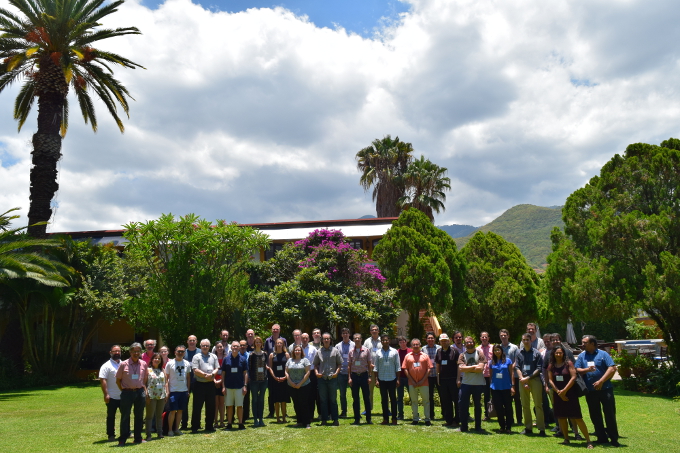Rules of Protein-DNA Recognition: Computational and Experimental Advances (18w5045)
Organizers
Trevor Siggers (Boston University)
Marcus Noyes (New York University, Langone Medical Center)
Description
The Casa Matemática Oaxaca (CMO) will host the "Rules of Protein-DNA Recognition: Computational and Experimental Advances" workshop from June 3rd to June 8th, 2018.
The information that determines our genetic make-up – from our eye color to our propensity to get cancer or Alzheimer’s – is encoded in the DNA sequence of our genomes. This DNA information is interpreted by proteins called transcription factors that ‘read’ the four-letter code in our DNA, promoting the activation or repression of genetic programs. Unfortunately we have been unable to decipher the non-protein-coding portion of our genomes, which comprises >95% of our DNA even though we now have access to thousands of fully sequenced human genomes and the numbers are increasing daily. A fundamental problem of modern biology will be how to discern DNA differences between people that affect our physical differences and the manifestation of disease. As a result, a major challenge facing computational and structural biologists is to crack the DNA code that will allow us to understand the impact of DNA differences on protein-DNA interactions and gene expression. The solution to this challenge will likely come from the convergence of theoretical, computational, biophysical, and structural approaches. The BIRS format is ideal for bringing together this combination of scientists in an informal and collaborative setting to further advance this goal.
The Casa Matemática Oaxaca (CMO) in Mexico, and the Banff International Research Station for Mathematical Innovation and Discovery (BIRS) in Banff, are collaborative Canada-US-Mexico ventures that provide an environment for creative interaction as well as the exchange of ideas, knowledge, and methods within the Mathematical Sciences, with related disciplines and with industry. The research station in Banff is supported by Canada's Natural Science and Engineering Research Council (NSERC), the U.S. National Science Foundation (NSF), Alberta's Advanced Education and Technology, and Mexico's Consejo Nacional de Ciencia y Tecnología (CONACYT). The research station in Oaxaca is funded by CONACYT.






